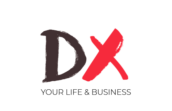
- Introduction to Inventory Management
- Types of Inventory: Raw materials, work-in-progress, finished goods, merchandise and supplies.
- Inventory Management Systems: An overview of manual vs. automated systems.

- Setting Up Inventory Systems: Key steps for implementation.
- Inventory Recording Techniques: FIFO, LIFO, and weighted average methods.
- Inventory Accuracy: Techniques for cycle counting and auditing.

- Introduction to Cost Accounting: Definitions, importance and objectives.
- Cost Classification: Differentiating between fixed, variable, direct, and indirect costs.
- Cost Behavior, Cost-Volume-Profit Analysis & Break-even Analysis
- Job Costing: Understanding the application and methodology.

- Cost Allocation: Methods for allocating overhead.
- Cost-Volume-Profit Analysis: Tools for understanding the relationship between cost, volume, and profit.
- Activity-Based Costing: Benefits and implementation strategies.

- Demand Forecasting and Planning: Techniques and tools for effective forecasting.
- Just-in-Time (JIT) Inventory System
- Economic Order Quantity (EOQ): Calculating the optimal order quantity.
- Safety Stock and Reorder Points: Determining inventory levels to prevent.

- Inventory Management Software: Key features and benefits.
- Integrating ERP Systems: Benefits of ERP on inventory and cost control.
- Tracking Expiry, Serial Numbers, Multiple Inventory Locations, WMS & Pick/Pack Process
- Free Airtable Inventory System Tutorial

 Control and Optimize your Inventory and Financials for Greater Efficiency:
Control and Optimize your Inventory and Financials for Greater Efficiency:










 Bonus 1 – Free Access To Airtable Inventory System Template (Forever). Estimated Value – P50,000
Bonus 1 – Free Access To Airtable Inventory System Template (Forever). Estimated Value – P50,000







